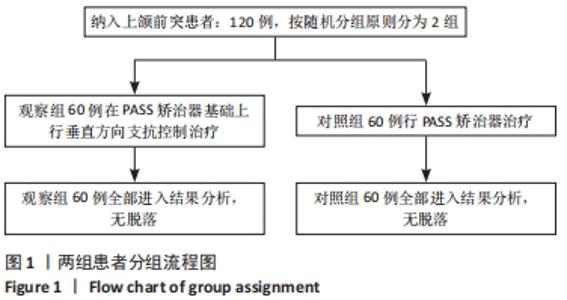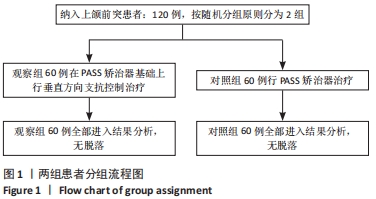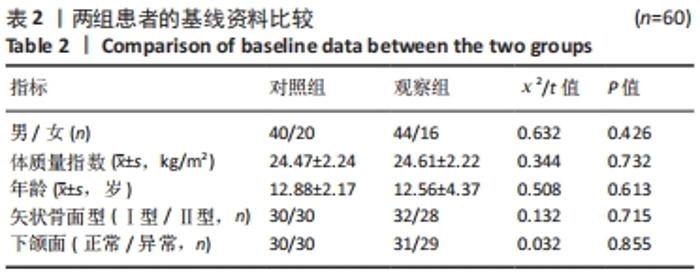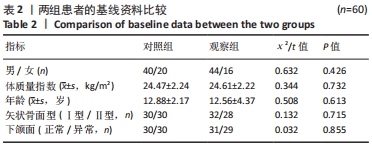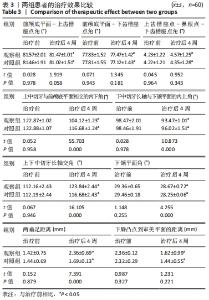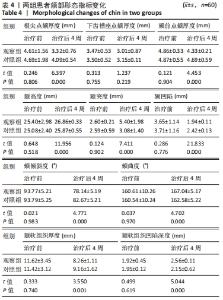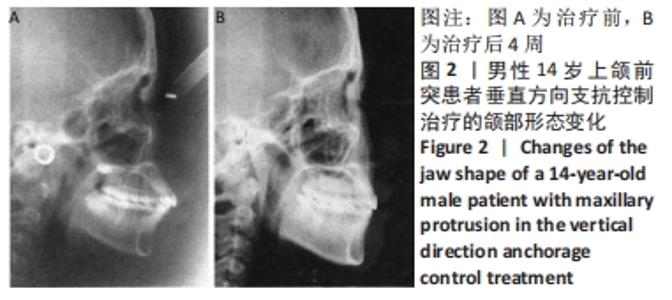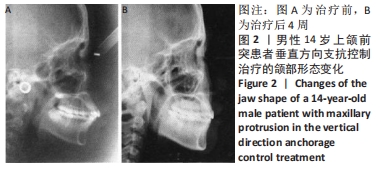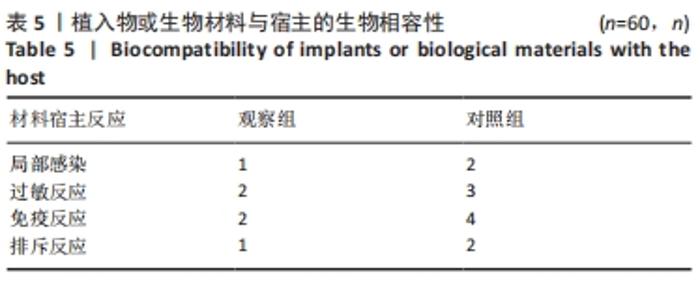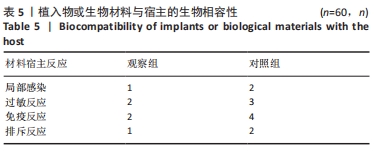[1] 于淑婷, 吴迪, 向美玲, 等. 颧牙槽嵴区微种植体支抗正畸力方向的三维有限元分析[J]. 中华口腔正畸学杂志,2018,25(1):28-32.
[2] 任亚男, 宋保龙, 封颖丽, 等. 无托槽隐形矫治器结合微种植体支抗远移上颌磨牙效率的三维重叠研究[J]. 中华口腔正畸学杂志, 2018, 25(2):92-97.
[3] 张夫波, 黄彩平, 于锋. 微种植钉作支抗压低伸长磨牙在牙列缺损修复中的应用效果观察[J]. 浙江医学,2018,40(19):76-77.
[4] 彭秋实,李沙.正畸微种植体支抗对错颌畸形患者牙周炎性微环境的影响[J]. 山东医药,2017,57(24):99-101.
[5] 袁东辉, 赵然, 高琛,等. 三种面垂直向异常指标对错颌畸形的诊断价值[J]. 中国组织工程研究,2007,11(13):2574-2574.
[6] AY B, MENDES VC, ZHANG L, et al. A “best fit” approach for synergistic surface parameters to guide the design of candidate implant surfaces. J Biomed Mater Res B Appl Biomater. 2019;107(6):2165-2177.
[7] KIM HJ, JANG WS, PARK HS. Anatomical Limits for Distalization of Lower Posterior Molars with Micro-Implant Anchorage. J Clin Orthod. 2019; 53(5):305-312.
[8] RAINA DB, LARSSON D, SEZGIN EA, et al. Biomodulation of an implant for enhanced bone-implant anchorage. Acta Biomater. 2019;96:619-630.
[9] LEKHADIA D, HEGDE G. Combining different treatment philosophies and techniques to reach the desired treatment goal using butterfly system: Customizing orthodontic treatment. Int J Orthod Rehabil. 2019;10(1):31-41.
[10] SHAH FA, THOMSEN P, PALMQUIST A. Osseointegration and current interpretations of the bone-implant interface. Acta Biomater. 2019;84:1-15.
[11] GHOSH A. Infra-zygomatic crest and buccal shelf - Orthodontic bone screws: A leap ahead of micro-implants – Clinical perspectives. J Indian Orthodon Soc. 2018;52(6):127-141.
[12] WON M. Class III treatment by combining facemask (FM) and maxillary skeletal expander (MSE). Seminars Orthodon. 2018;24(1):95-107.
[13] BAE SM, KIM HJ, KYUNG HM. Long-term changes of the anterior palatal alveolar bone after treatment with bialveolar protrusion, evaluated with computed tomography. Am J Orthodon Dentofacial Orthop. 2018; 153(1):108-117.
[14] KLINGVALL EK R, HONG J, THOR A, et al. Micro- to Macroroughness of Additively Manufactured Titanium Implants in Terms of Coagulation and Contact Activation. Int J Oral Maxillofac Implants. 2017;32(3):565-574.
[15] YAN SG, WOICZINSKI M, SCHMIDUTZ TF, et al. Can the metaphyseal anchored Metha short stem safely be revised with a standard CLS stem? A biomechanical analysis. Int Orthop. 2017;41(12):2471-2477.
[16] KARBOWNICZEK J, MUHAFFEL F, CEMPURA G, et al. Influence of electrolyte composition on microstructure, adhesion and bioactivity of micro-arc oxidation coatings produced on biomedical Ti6Al7Nb alloy. Surfac Coat Technol. 2017;32:197-107.
[17] CHEN WM, LEE SJ, LEE PVS. Failure Analysis of An Additive Manufactured Porous Titanium Structure for Orthopedic Implant Applications. Mater Sci Forum. 2016;863:45-49.
[18] BARAK S, NEUMAN M, IEZZI G, et al. A new device for improving dental implants anchorage: a histological and microactured Porous Titanium Structure rabbit. Clin Oral Implants Res. 2016;27(8):935-942.
[19] 彭绍斌, 程超, 王萍, 等. 种植支抗压低上颌前牙时不同植入部位稳定性的研究[J]. 中华口腔正畸学杂志,2019,26(2):77-80.
[20] 苏丽, 黄晓峰.种植体支抗配合舌侧矫治技术远中移动牙列的正畸疗效五年随访一例[J]. 中华口腔医学杂志,2018,53(12):838-841.
[21] 刘海燕, 荆璇, 李冰, 等. 直丝化舌侧矫治不同微种植体高度内收上前牙的生物力学分析[J]. 口腔医学研究,2019,35(2):79-83.
[22] 仲姗, 管晓娟, 李敏, 等. 微种植体在青年上颌后牙区植入的稳定性研究[J]. 宁夏医科大学学报,2017,39(9):93-95+139.
[23] 李汶汶, 郑琳琳, 别苗苗, 等. 种植体支抗压低下前牙的矫治效果和牙根吸收的CBCT研究[J]. 临床口腔医学杂志,2018,34(5):27-30.
[24] NOLIN AW. Recent advances in remote sensing of seasonal snow. J Glaciol. 2010;56(200):1141-1150.
[25] KIM DG, JEONG YH, CHIEN HH, et al. Immediate mechanical stability of threaded and porous implant systems. Clin Biomech. 2017;48:110-117.
[26] ZHENG X, SUN Y, ZHANG Y, et al. Implants for orthodontic anchorage. Medicine. 2018;97(13):e0232.
[27] REBECCA KE, JAAN H , ANDREAS T , et al. Micro- to Macroroughness of Additively Manufactured Titanium Implants in Terms of Coagulation and Contact Activation. Int J Oral Maxillofac Implants. 2017;32(3):565-574.
[28] KIM IY, CHOI H, KIM K. Improved survival of anchorage-dependent cells in core-shell hydrogel microcapsules via co-encapsulation with cell-friendly microspheres. J Microencapsul. 2017;34(1):57-62.
|
